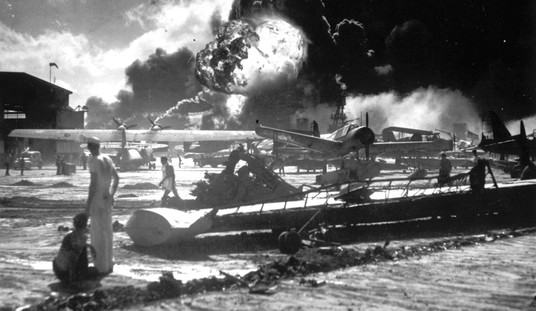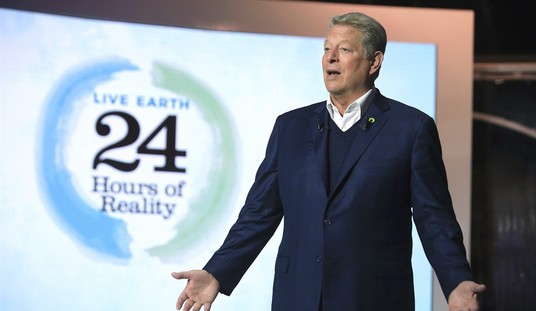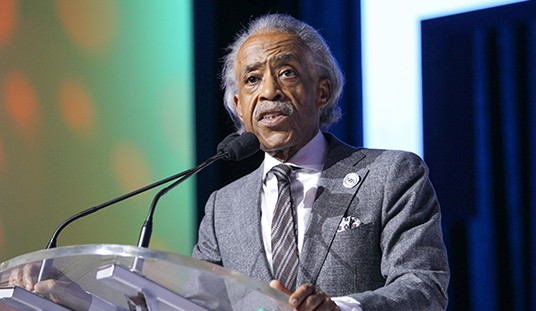Before the War on Terror there was the Cold War. Before the shadow of the suitcase nuke there was the specter of “many Vietnams”. And before there was an Osama bin Laden there was Ernesto “Che” Guevara. Although he is known mostly as a logo now, Che Guevara was at one time the most wanted man on earth. His vow to create “many Vietnams” sent chills through a US administration floundering in that very conflict. Like Osama, his whereabouts were unknown. His last reported location was the Congo; at the start of 1967 the CIA believed him dead though he was last reported by Communist conference as “serving the revolution somewhere in Latin America”.
Che had become a ghost, a specter haunting Lyndon Johnson. But unlike Osama Bin Laden, who was a faintly ridiculous figure popularly imagined to be skulking in caves, Guevara was a rock star celebrity. He was a confidante to Third World presidents, articulate, handsome in a hirsute way, conscious of his destiny. There’s a even fake photograph of Che Guevara jamming with John Lennon, a counterfeit which even if it isn’t real arguably should have been.
Unlike Zero Dark Thirty, where the hunters for Bin Laden are played by Hollywood handsome actors, comparatively few can recall the men who got Che. Fortunately the story of how two Americans, Felix Rodriguez and Ralph “Pappy” Shelton and their Bolivian proteges hunted Che Guevara down in Bolivia is retold by Mitch Weiss and Kevin Maurer in the book Hunting Che (available in Kindle for $12.08).
The contrast between the hunted and the hunters could not be greater.
One one side of the drama was a celebrity doctor who had been a Cuban cabinet minister, a confidante to great men and an international celebrity. On other side, the man who would forge the sword that would destroy Che, was Special Forces Major “Pappy” Shelton, born on a Mississippi farm; who joined the Army because it offered a path of respect, service and certainty out of his small town world and who only finished high school. Gathering intelligence for the sword was Felix Rodriguez of the CIA, the man who created the intel network that found Guevara; perhaps the apotheosis of a Cold Warrior; driven from Cuba in youth, who returned with exiles only to escape the wreckage of the Bay of Pigs fiasco by a hairsbreadth; a man with a personal grudge against Guevara, who had watched as Che himself oversaw the execution of his friends in the aftermath of the debacle from his place of hiding.
The differences translated to style. Che made literary entries in a diary and had an actual French intellectual, Regis Debray, as a camp follower. Pappy Shelton was a man who saw himself as a soldier — there was no higher honor — and got along naturally with farmers like himself in the Bolivian countryside. Where Che’s hobby was chess Shelton won over his Bolivian students by playing a Gibson guitar in front of the Kiosko Hugo, a general store in the rural town where he trained Bolivia’s first Ranger Battalion.
The movie star versus the mustang. The voluntary exiles versus the involuntary one.
Unsurprisingly their posterity was different also. Che now has a shrine to his memory in the very place he was captured; it is a place of pilgrimage for leftists the world over. By contrast the old soldier ended up as a board member of the First United Methodist Church of Sweetwater, Tennessee. At his death there were no accolades by presidents, just the flowers and goodbyes of his wife, son and eight grandchildren. Debray went on to be a French government official. Felix Rodriguez remains a figure in the Cuban exile community; Odysseus still searching for home.
To make sense of Che Guevara’s apparently nonsensical campaign in Bolivia — there were never more than 50 men under his command — one must understand that he saw himself as the analog of the fictional British mercenary “Cat” Shannon in Frederick Forsyth’s Dogs of War. Just as it was fashionable to believe that a handful of white mercenaries could topple any black government in Africa, Che thought that a small group of dedicated Marxist guerillas — a foco — could topple the rotten governments of South America, just as they had done in Cuba.
For ultimately Guevara never believed in the military metrics of numbers, firepower or even strategy. He believed in spiritual superiority. They would win because they were better, truer men; men on the correct side of history. A revolutionary’s first duty was to make revolution, and the rest was up to Marxist providence.
Success with those odds relies on the ineptitude of the government to be toppled. In fact Che had chosen to attack Bolivia precisely because he believed they were the most incompetent of an incompetent lot. And indeed he met with initial success. The government of president Rene Barrientos proved nearly as dysfunctional as that of the fictional president of Zangaro, Jean Kimba. Guevara successfully ambushed poorly trained conscript units and very soon Barrientos was in an actual panic, petitioning Washington for money, jets and napalm based on information extracted by his torturers from suspects, convinced he was surrounded by literally thousands of Cuban mercenaries who at any moment would descend on La Paz.
Barrientos’ hysteria — and lack of any professional intelligence apparatus — was probably the reason his claim that Che Guevara was in Boliva met with disbelief in Washington. Sure and who else besides Che? Dracula? Frankenstein?
The Johnson administration was afraid of many Vietnams, but the State Department was even more afraid of direct American involvement. So the administration met the Bolivian insurgency by sending Pappy to train an indigenous Ranger unit while the CIA sent Felix Rodriguez to fix the intelligence with instructions to stay in the background.
The arrival of the Americans queered the Dogs of War scenario. When Pappy Shelton was told by the Bolivians his Rangers in training would be allotted ten live rounds to practice, he allotted five thousand rounds per man. Meanwhile, Rodriguez set up radio nets, collated intelligence, read captured documents, built dossiers, identified the men with Guevara by name; dug up the caches marked in captured documents and even found one of Che’s cigar butts.
It was as if “Cat” Shannon suddenly found Chuck Norris and Felix Leiter advising Jean Kimba’s Zangaro government. That instead of facing a rabble, he was faced with competent professionals. The unexpected improvement in quality pulled the rug out from under Che’s assumptions. Thus, when Che’s force was encountered next, the Bolivian Rangers competently and quickly trapped him in one of the canyons which fed the Rio Grande river in southern Bolivia.
The scene of Che’s last stand can be envisioned as a main street with alleys leading off it. The Bolivian Rio Grande was the highway and the canyons were the alleys. After an encounter with one of Che’s units was reported Felix Rodriguez immediately realized that Guevara himself must be proximate.
Rodriguez had discovered — by befriending rather than torturing a captured guerilla — that Che Guevara’s tactical method was to lead with a squad (the vanguard); occupy a middle element some hundreds of yards lagged while a rearguard swept the rear. Since the vanguard had been engaged near the Rio Grande, Guevara would be nearby.
Acting on this insight, the Bolivian Rangers were trucked to little mountain villages on the ridges above the Rio Grande. From the surrounding high ground they swept south down the Rio Grande and then began to systematically clear the canyons, that is to say the alleyways. It was like they had a roadblock on both ends of main street and were now searching the houses on either side.
A few hundred yards south and downslope of the village of La Higuera, the Bolivian Rangers encountered Che’s little platoon and after an exchange of fire he staggered, more than walked into a Ranger unit, completely spent, ragged and nearly starved. In days past he might have given his pursuers the slip, but the pressure had run down his batteries and like a sinking sub, he gasped his way to the surface.
Although CIA wanted Guevara flown to Panama for interrogation, the earlier capture of Regis Debray and the subsequent international pressure to release him had convinced president Barrientos that Guevara would be too much political trouble to keep alive. Against the urgings of the DIA, the CIA and possibly the ambassador, Barrientos had Che Guevara shot.
The great bulk of Che Guevara’s fame lies in his conduct in the final hours. For if his military methods were farce the tableau of his death was high drama. They were a continuation of the ruthless, ideologically pure form of warfare that he pursued. Guevara had marched through the Bolivian hills to almost no military purpose, demanding of his men a kind of spiritual transformation — that almost seemed its object — which once achieved, would unlock the keys to the presidential palace of Bolivia. It was a vision so stark that his men melted away from its burning hardship. Even Debray had bugged out because he could not endure the revolutionary hermit’s life. Too much dirt, too much blood, too little food.
And so it was with five boiled eggs in his pocket and a ton of visionary bravado that Che Guevara met his end. One wonders whether he had rehearsed the moment, even subconsciously, in his mind. No one, not even Rodriguez, doubted that Che was a kind of revolutionary saint; whose idea of perfected humanity consisted of its complete denial. Not for him were family, a Gibson guitar, beer and square dancing with Bolivian campesinos in front of the Kiosko Hugo, nor even perhaps victory. Not for him were the ordinary stuff of life. Che was transported by the vision of transcendence; transfixed by a glimpse into the possibility of a Worker’s Paradise so perfect that it would be ruined by attainment. Weiss and Maurer wrote:
Writer Christopher Hitchens said, “Che’s iconic status was assured because he failed. His story was one of defeat and isolation, and that’s why it is so seductive. Had he lived, the myth of Che would have long ago died.”
When a Bolivian Ranger officer glanced up at Che while watching one of his mortally wounded men die he told Guevara. “This is going to be over.” Che instantaneously retorted, “the revolution has no head, comrade.” But what Che Guevara forgot was that however the head might be, reality had a body. A body consisting of the ordinary spate of life; of common dreams of people who want simple things. Food, love and aspiration. The body goes on too, comrade, even if the disembodied revolutionary head tries in every decade to place itself upon its shoulders.
And yet Che was right. It always goes on. He was the first Osama, but not the last.
Did you know that you can purchase some of these books and pamphlets by Richard Fernandez and share them with you friends? They will receive a link in their email and it will automatically give them access to a Kindle reader on their smartphone, computer or even as a web-readable document.
Did you know that you can purchase some of these books and pamphlets by Richard Fernandez and share them with you friends? They will receive a link in their email and it will automatically give them access to a Kindle reader on their smartphone, computer or even as a web-readable document.
The War of the Words for $3.99, Understanding the crisis of the early 21st century in terms of information corruption in the financial, security and political spheres
Rebranding Christianity for $3.99, or why the truth shall make you free
The Three Conjectures at Amazon Kindle for $1.99, reflections on terrorism and the nuclear age
Storming the Castle at Amazon Kindle for $3.99, why government should get small
No Way In at Amazon Kindle $8.95, print $9.99. Fiction. A flight into peril, flashbacks to underground action.
Storm Over the South China Sea $0.99, how China is restarting history in the Pacific
Tip Jar or Subscribe or Unsubscribe“>The War of the Words for $3.99, Understanding the crisis of the early 21st century in terms of information corruption in the financial, security and political spheres
Rebranding Christianity for $3.99, or why the truth shall make you free
The Three Conjectures at Amazon Kindle for $1.99, reflections on terrorism and the nuclear age
Storming the Castle at Amazon Kindle for $3.99, why government should get small
No Way In at Amazon Kindle $8.95, print $9.99. Fiction. A flight into peril, flashbacks to underground action.
Storm Over the South China Sea $0.99, how China is restarting history in the Pacific
Tip Jar or Subscribe or Unsubscribe










Join the conversation as a VIP Member